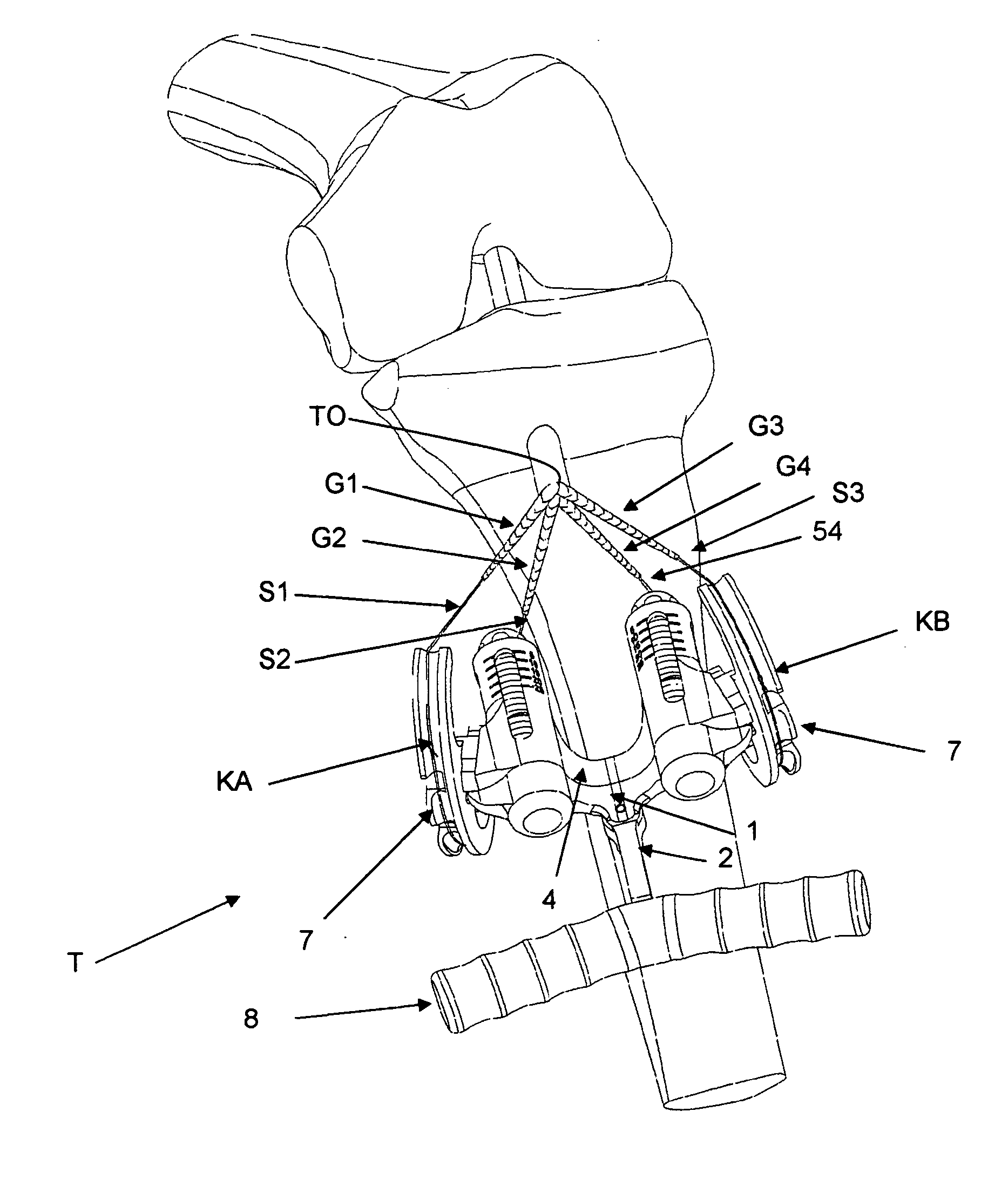Graft ligament strand tensioner
a graft ligament and tensioner technology, applied in the field of medical devices, can solve the problems of difficult to reliably tension each ligament strand to an equal tension, inability to achieve desired tension, and inability to reliably attach the weight to the various graft ligament strands
- Summary
- Abstract
- Description
- Claims
- Application Information
AI Technical Summary
Problems solved by technology
Method used
Image
Examples
Embodiment Construction
First Preferred Embodiment of the Novel Tensioner
[0028] Looking first at FIGS. 1-11, there is shown a first preferred embodiment of the novel graft ligament strand tensioner. More particularly, the novel graft ligament strand tensioner T generally comprises a handle body 1 (FIG. 6), a handle beam 2, a pair of slide rails 3 (FIG. 11), a slide body 4, a pair of compression springs 5 (FIG. 11), a handle pivot pin 6, a pair of suture rails 7, a pair of handle grips 8, a pair of retaining pins 9 (FIG. 3), and a pair of retaining pin springs 10 (FIG. 11), all of which are assembled together in the manner shown in the drawings, and as hereinafter discussed, so as to form the complete tensioner T. Tensioner T may be used to position and tension a plurality (e.g., four or two) graft ligament strands in the course of effecting a ligament (e.g., an ACL) reconstruction. By way of example but not limitation, FIG. 1 shows tensioner T being used in a four-strand ligament reconstruction, and FIG. ...
PUM
 Login to View More
Login to View More Abstract
Description
Claims
Application Information
 Login to View More
Login to View More - R&D
- Intellectual Property
- Life Sciences
- Materials
- Tech Scout
- Unparalleled Data Quality
- Higher Quality Content
- 60% Fewer Hallucinations
Browse by: Latest US Patents, China's latest patents, Technical Efficacy Thesaurus, Application Domain, Technology Topic, Popular Technical Reports.
© 2025 PatSnap. All rights reserved.Legal|Privacy policy|Modern Slavery Act Transparency Statement|Sitemap|About US| Contact US: help@patsnap.com



